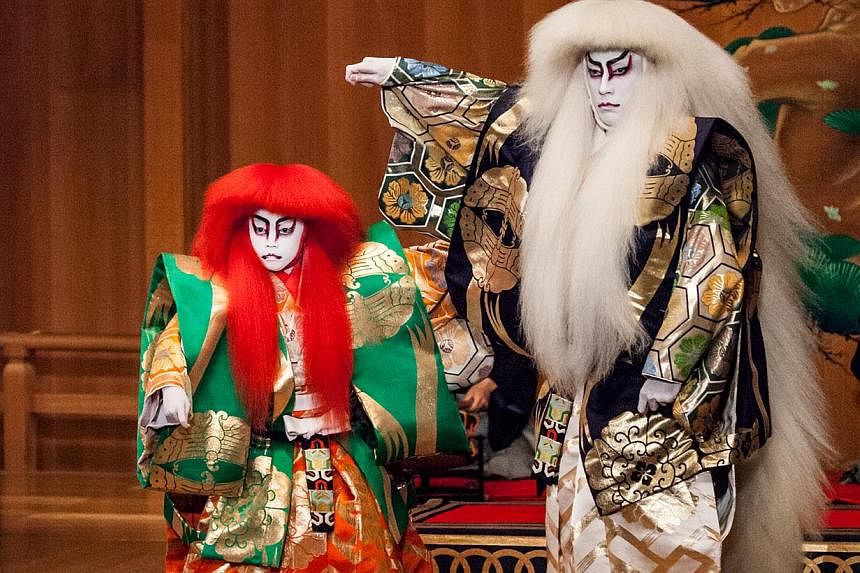Two traditional Japanese theatrical art forms - kabuki and noh - will be presented on the same stage tonight when Japan Theater, a production helmed by renowned kabuki actor Ebizo Ichikawa XI, opens at Marina Bay Sands.
While both art forms boast centuries of history, Ichikawa says they are starkly different.
"Noh is 600 years old and kabuki is 400 years old, there's a 200-year difference. Noh is like the teacher of kabuki and kabuki imitates it," he tells Life! through a translator.
"Noh is a very traditional performance, but kabuki is something that's for ordinary people."
There are also significant visual differences between the two art forms.
In noh, performers wear a mask, but in kabuki, they use face paint. Kabuki is also more exaggerated - for example, while both employ wigs, the ones used in kabuki are a lot longer and more voluminous.
Ichikawa, 36, was born Horikoshi Takatoshi but took up the Ebizo Ichikawa XI stage name in 2004.
He is the 11th in his family lineage to assume the prestigious name, which is bestowed by the family only to male kabuki practitioners who attain a high level of mastery. Most of them were blood relatives, though some were adopted into the family. His father, Ebizo Ichikawa X, died last year.
For Ichikawa, who is married to newscaster Mao Kobayashi with whom he has two children, taking up the hereditary role and becoming a kabuki actor was something he did not even have to think about.
Asked why he chose to continue the tradition, he simply replied: "Because I was born into it. That's the reason."
One of his goals is to make kabuki more accessible to the younger generation and to spread the art form around the world.
"To reach out to Japanese youngsters, we simply have to make more interesting performances," he says.
"But for people around the world, it is difficult for them to understand Japanese, so there's a language barrier. We're going to focus more on dance and the expression of the body. I really think that will break down the barriers between us and youngsters around the world."
In Singapore, English-language headsets will be available during the performances.
He and his troupe of 50 will present two pieces here: Noh piece Shakkyo and Renjishi in the kabuki form. They are both excerpts which he says were "loved by the shoguns and the head samurais".
Shakkyo is based on a legend, which tells of a Buddhist saint who created a lion that is often seen dancing among the peony flowers.
In Renjishi, a mythical lion-like creature challenges her child with obstacles and allows him to learn by overcoming them himself.
Ichikawa says: "Singapore has a connection with a lion. Renjishi also means lion, so there is a connection between Singapore and Renjishi."


